Few artworks exist underwater. Artists like Maya Lin, Robert Smithson, Alberto Burri, or James Turrell have interfaced with and manipulated the land in their work. And while Christo’s The Floating Piers allowed visitors to walk on water, the piece was experienced at the surface, not below.
Doug Aitken may have pioneered a new movement late last year, when in collaboration with Parley for the Oceans, he created Underwater Pavilions. The project included three underwater sculptures installed in the waters off the coast of Catalina Island in California. Then coinciding with Aitken’s retrospective “Doug Aitken: Electric Earth” at MOCA’s Geffen Contemporary Art Center in Los Angeles, the reflective, multifaceted and cavernous pieces could be swum to, and swum through, by swimmers, snorkelers, divers, and sea creatures alike.
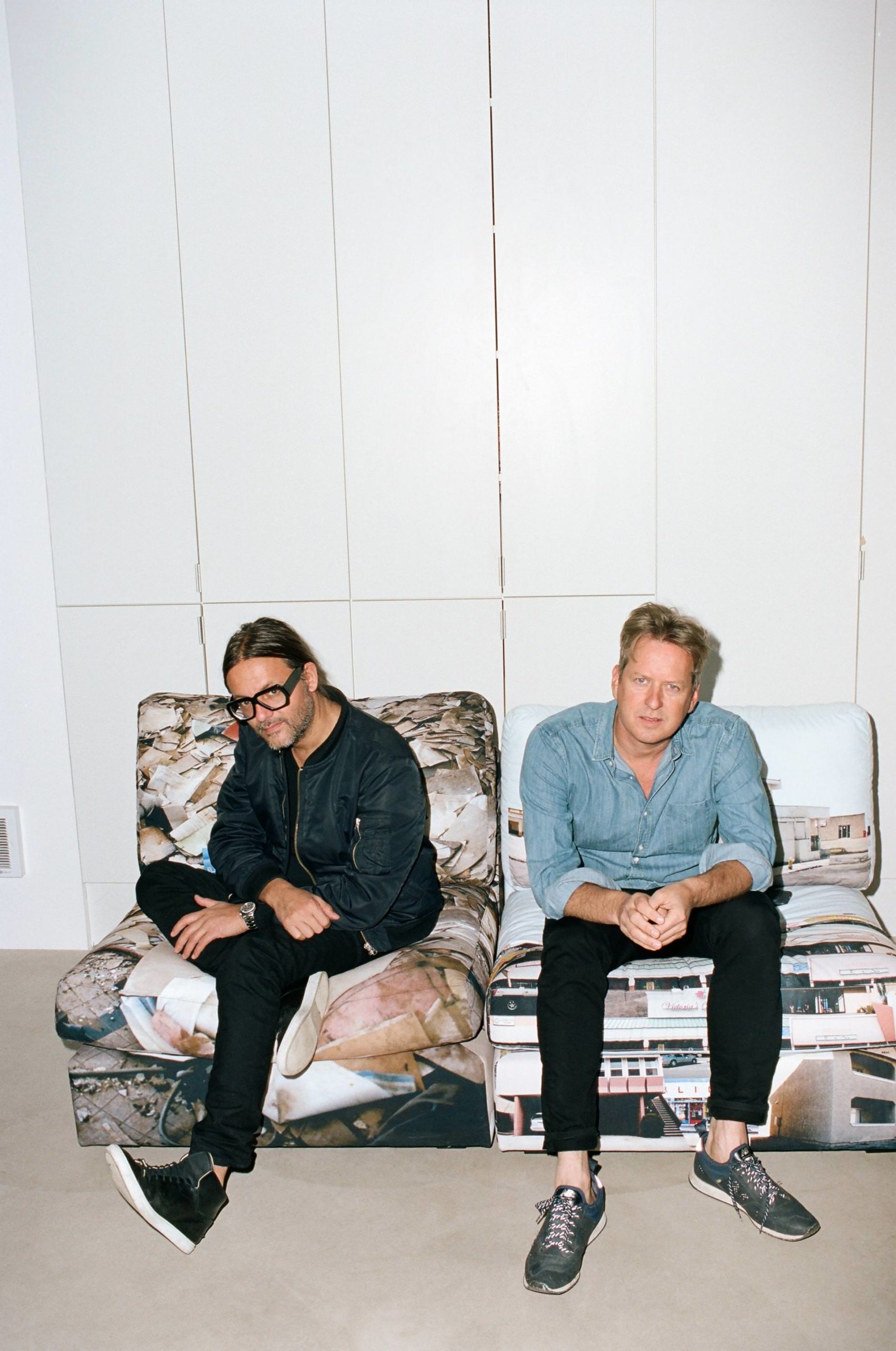
Cyrill Gutsch and Doug Aitken
Photo by Ami Sioux
Aitken was able to realize the pavilions, which offer a unique vantage point from which to consider and observe the sea, thanks to Parley for the Oceans. The organization acts as a network for marine conservation, bringing together leaders from a variety of fields. In this instance, Aitken worked with Parley’s NASA-aided Deep Space program, which explores ways to protect and conserve the ocean.
Early this year, Whitewall spoke with Aitken and Cyrill Gutsch, founder of Parley for the Oceans.
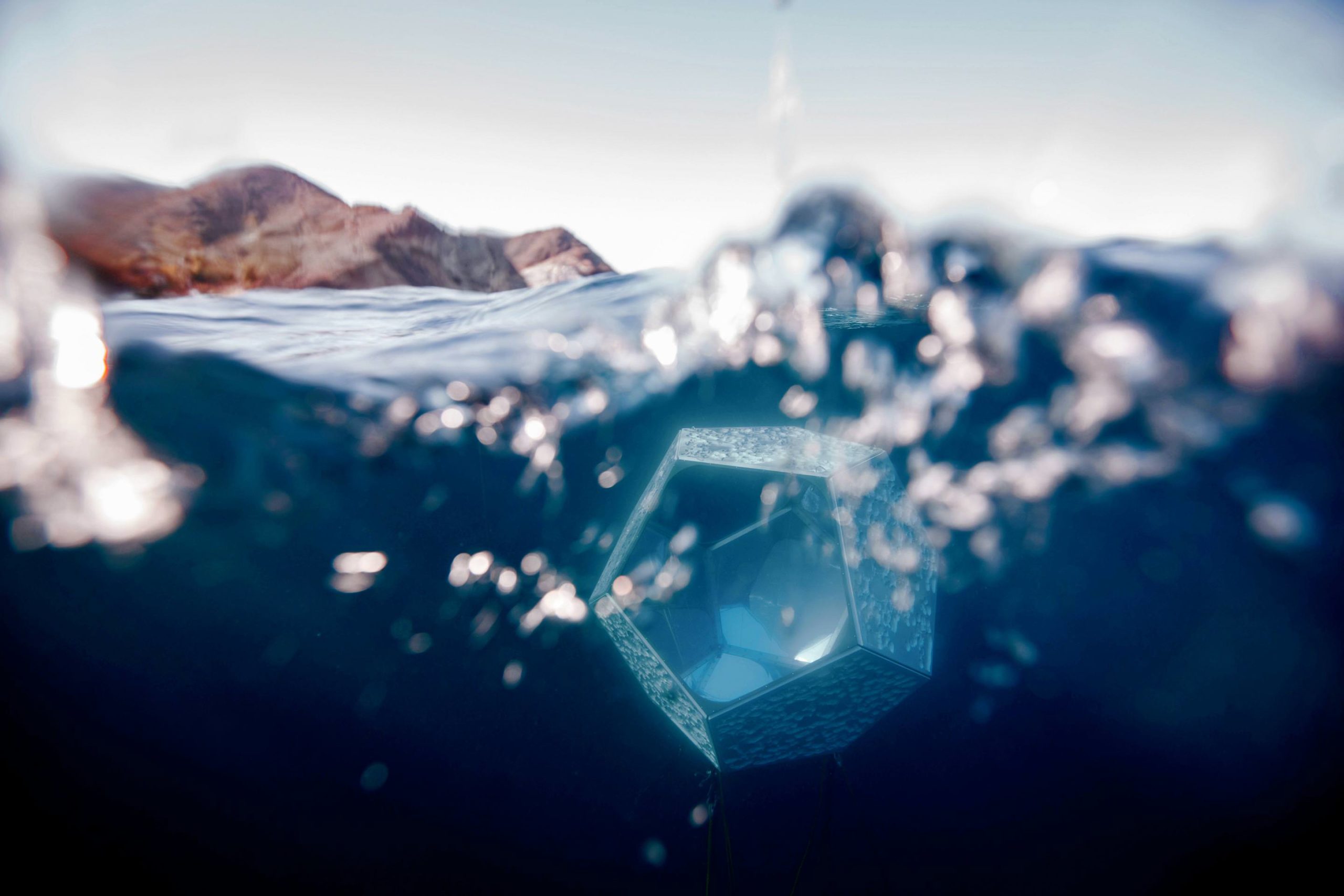
Patrick Fallon, Parley for the Oceans
WHITEWALL: Doug, in talking about the origins of Underwater Pavilions, you said you wanted to step out of your comfort zone but did not want to create something on the land. Instead, you wanted to work with the ocean. Why?
DOUG AITKEN: I think in a lot of ways we always see art as a new frontier, as a place to expand. It’s interesting because as a culture, we are so accustomed to seeing all the different art forms so segregated into silos. We’re dealing with a totally new world right now, a different latitude. And in some ways that led me to think about the idea of the ocean. I recognize you can make a piece of land or art in the desert, or you could do something in an urban space. But I live on a coast, and when I find myself looking out on the ocean, it’s this kind of infinite space, but it’s incredibly minimal and it’s foreign and unknown. So this idea developed. I thought that if you could take this concept and almost roll off the earth and roll into the ocean, and roll under the ocean and live there, then there’s a totally different condition and set of parameters that you could work with. That was the starting point.
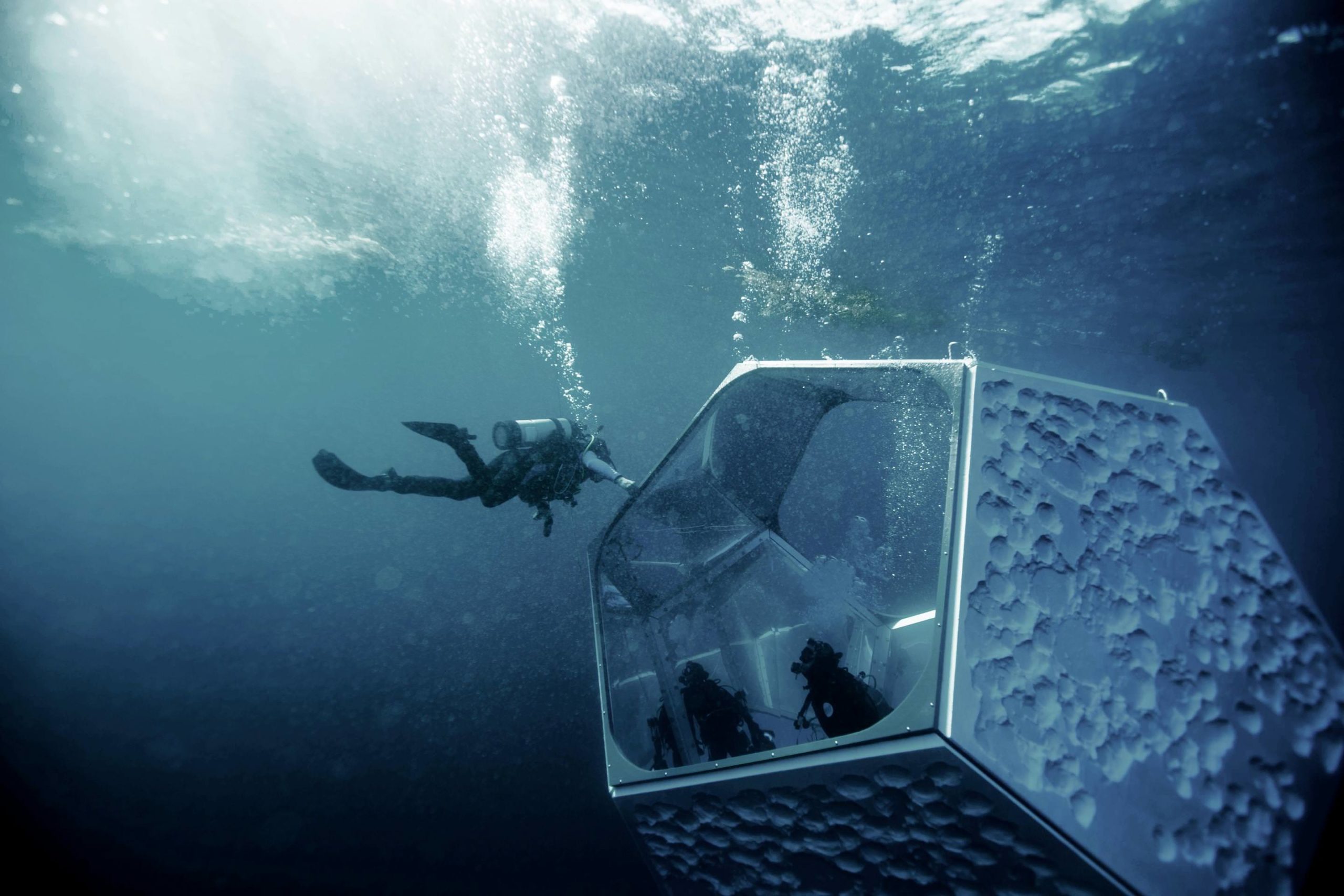
Patrick Fallon, Parley for the Oceans
WW: Cyrill, how did you then connect with Doug? Why are collaborations with artists important for Parley for the Oceans?
CYRILL GUTSCH: Last year we felt like we really needed a program that redefines how people feel about the ocean. It’s very difficult to make people protect something they don’t know and something they don’t appreciate and something they don’t love. So we came up with this new program, Parley Deep Space, and the idea was to create new ways of presenting the oceans. The artist has this perfect position in society to inspire change. Art is one of the best communicating tools for us.
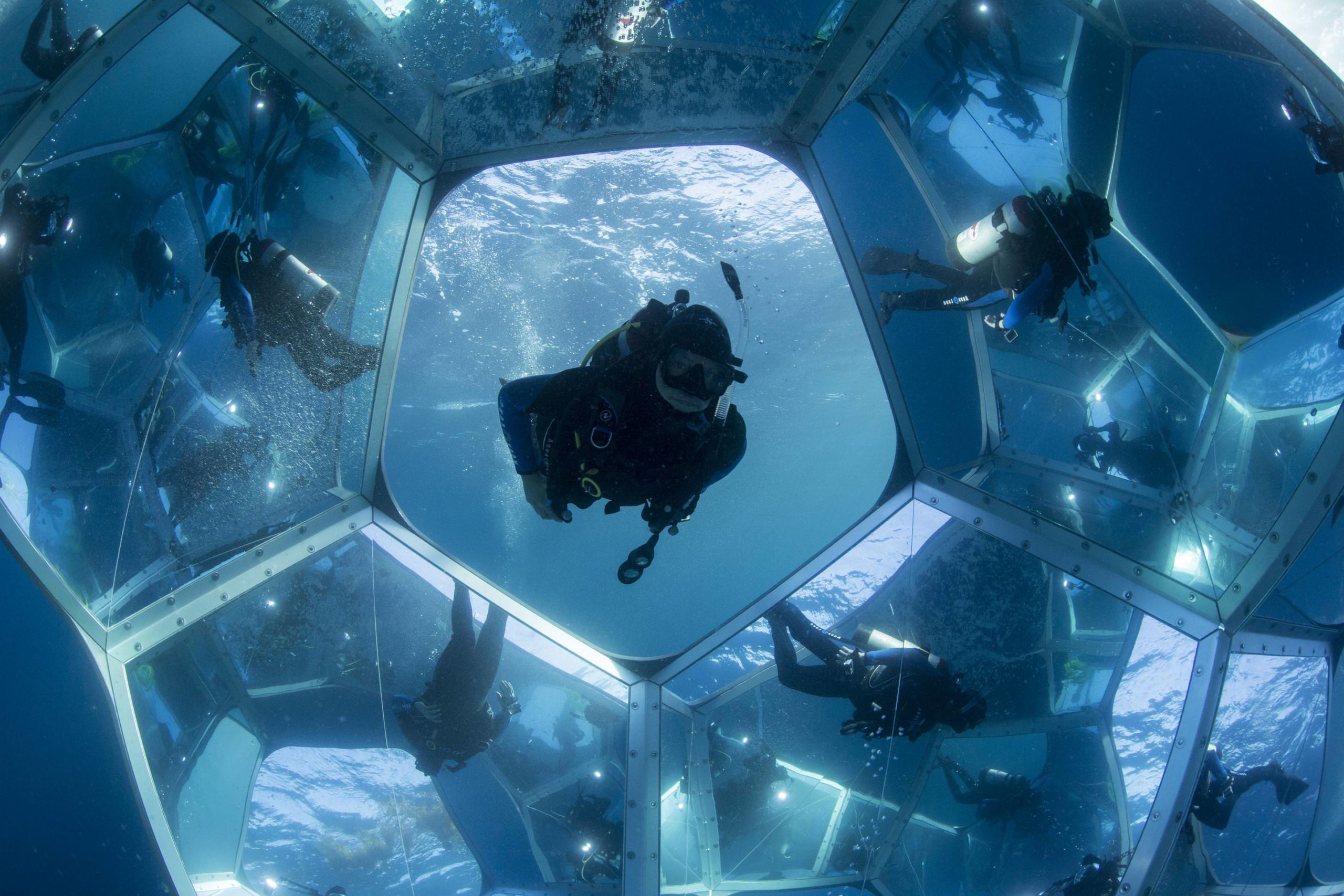
Shawn Heinrichs, Parley for the Oceans
WHITEWALL: For both of you, what was it like the first time you were able to dive and experience it? Because it was a sculpture before it was submerged. What was it like for you to truly experience it the first time?
DA: It is such a strange moment when you see a concept that you’ve been working on for a very long period of time, to suddenly be there in front of, beginning to live its own life. The first time I dove with the work when it was installed, I had this strange out-of-body experience. I recognized that what I had seen on land, which looked like a formal geometric sculpture, was completely transformed when it was under the Pacific. Not only was it transforming, but I was transforming, because my sense of perception was challenged. The ocean acts like a continuously changing lens for a person, and visually everything you see—the depth is changing, the color is mutating—everything is transforming all the time. And you are fluctuating between moments where you feel incredibly vulnerable and something can happen and you can die right there, and other moments where you forget that entirely and you are in the present moment and completely engaged. There’s a kind of electricity that is around you.
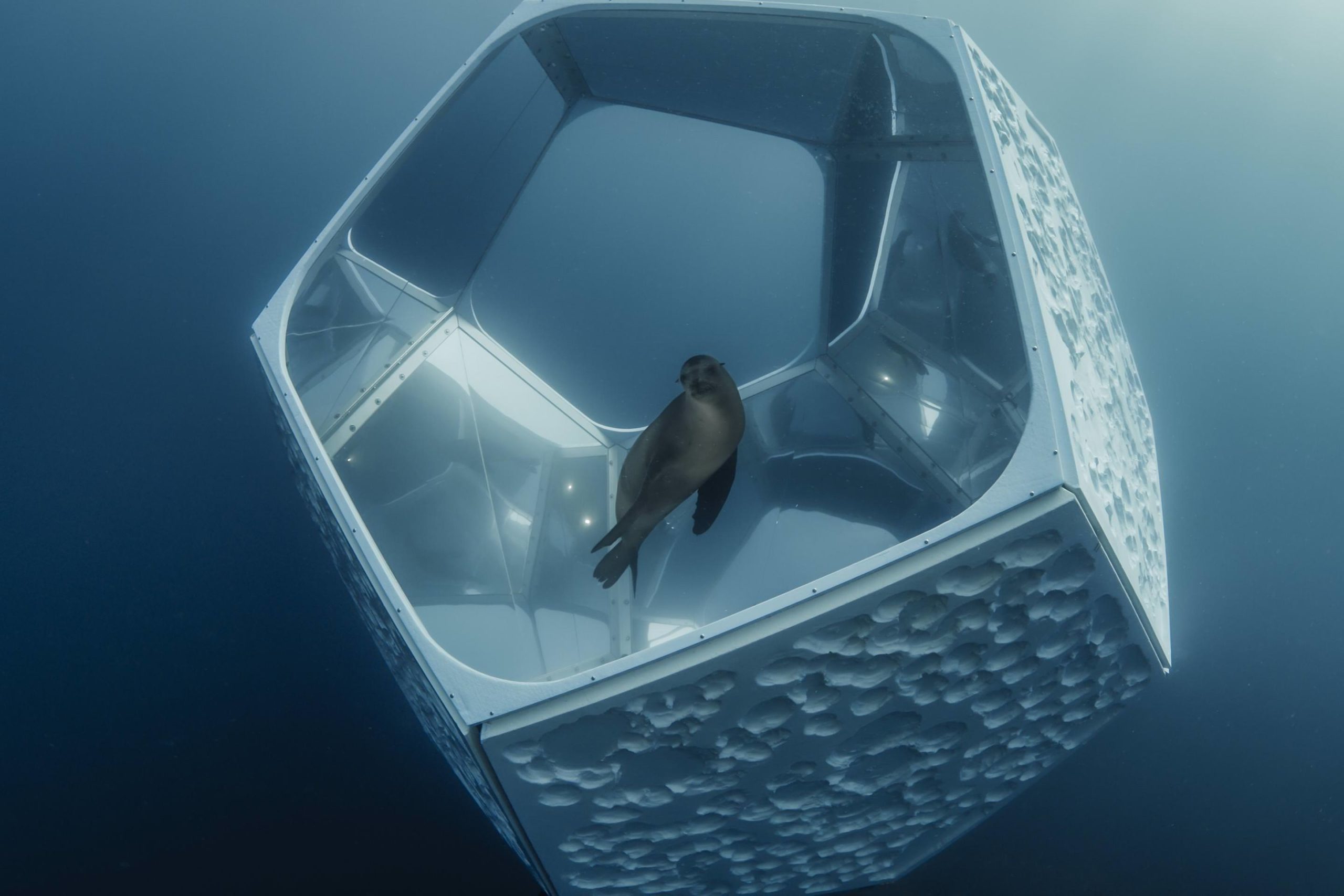
Shawn Heinrichs, Parley for the Oceans
CG: When I was diving, it was so fascinating. Everything that I hoped and felt and expected to happen was finally reality. You have this total spatial experience. It is so different from a normal dive. These objects don’t belong there, but they’re still so perfectly located there. You see the beauty of the ocean and the marine life. You have the reflection of the light, the changing of color. You can watch it for forever. It makes you rethink how you see the sea. It makes you question the relationship between mankind and nature. You really start thinking, how can we create things that actually protect this planet? All that happened in the first dive.
WW: Doug, did working with Parley for the Oceans and seeing Underwater Pavilions come to life change your own perception and relationship with the sea?
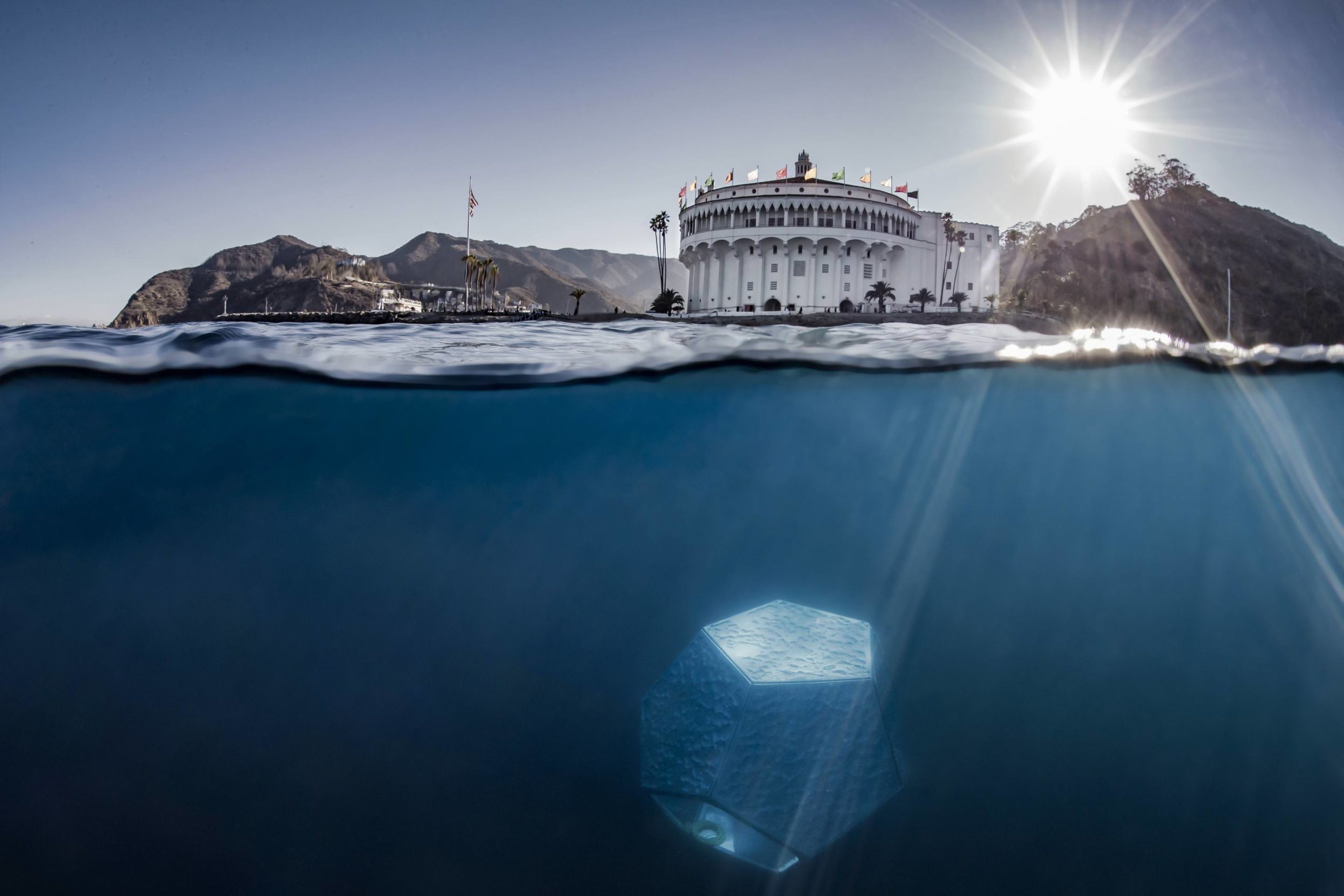
Shawn Heinrichs, Parley for the Oceans
DA: I think the act of seeing is a form of activism. I think having a project like this that invites you to step into a landscape that you may not be familiar with, to step under the ocean surface, is important. I think, in some ways, the value of an artwork is to ask questions—to provoke in a certain way, to open up an awareness, or slow down time. I think that’s all kind of part of the journey of making.
This article is published in Whitewall‘s 2017 Design Issue.








